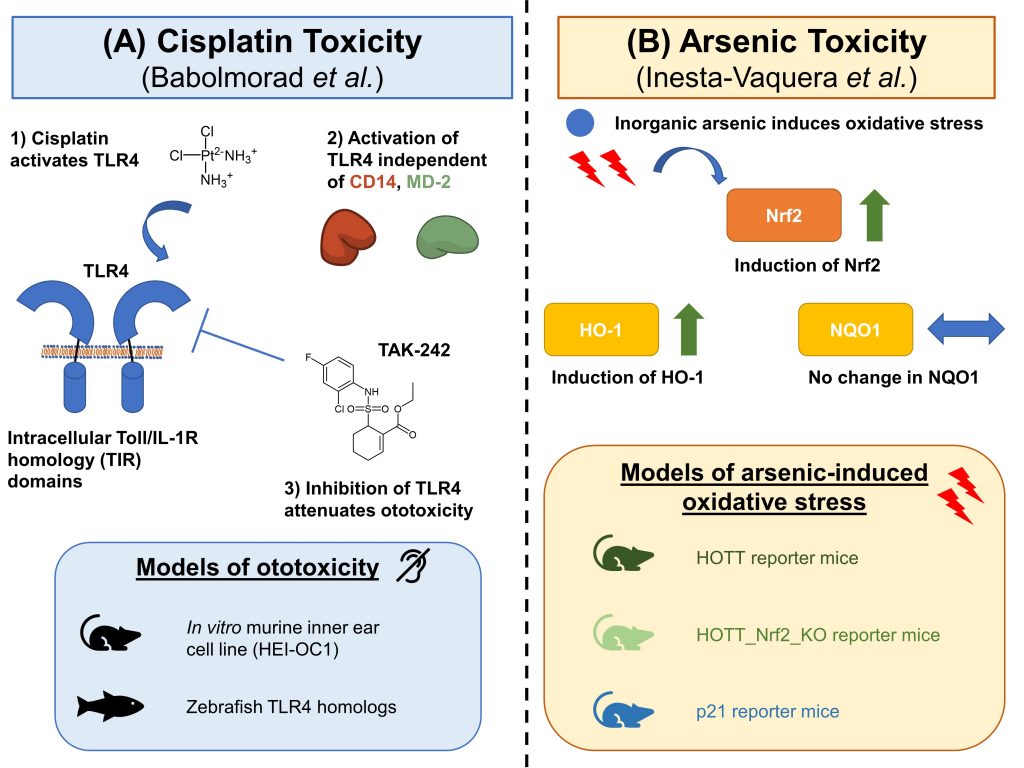
 Serum arsenic is useful if the patient is anuric. (normal <50 microgram/24 hours or 675 nmol/24 hours). 24 hour urinary collection better reflects the body burden. Spot urinary arsenic can confirm the diagnosis (normal <30 microgram/L or 400 nmol/L). Chest and abdominal X-rays (inorganic arsenic is radio-opaque). Screening: 12 lead ECG, BSL, Paracetamol level. Monitor fluid resuscitation and general supportive measure for any organ failure. Cutaneous lesions (hyperkeratosis of palms and soles, hyper pigmentation), nail changes ( Mee’s lines), painful peripheral neuropathy and malignancies of the skin of bladder. Peripheral neuropathy can develop later. GI symptoms, leucopenia and deranged LFTs and haematuria. Peripheral neuropathy may develop ofter 1 – 3 weeks in an ascending fashion similar to Guillian-Barre syndrome progressing to respiratory failure. Bone marrow suppression develops over 24 – 72 hours reaching a nadir in 2 – 3 weeks and alopecia. Cardiovascular collapse within hours and acute myopathy as indicated by ECG changes and dysrhythmias. Hypersalivation and a garlic odour are classic symptoms. Severe watery diarrhoea (choleroid), vomiting and abdominal pain. Children: Any ingestion of arsenic insecticide should be considered as potentially lethal. Chronic intoxication usually takes 10+ years to occur from artesian water. Ingestion of 1 mg/kg is potentially lethal. Can be managed with benzodiazepines (varying doses in the textbooks, easy method is 0.1mg/kg IV for lorazepam (max 4mg) / midazolam (max 10mg) / diazepam (max 10mg). Check the patient is not in a dysrhythmia. Give 10 – 20 ml/kg of IV crystalloid, if response is not adequate start noradrenaline. Undergoes hepatic methylation and metabolites are excreted in the urine (unless its organic arsenoids from seafood in which case it is excreted unchanged). In chronic exposures arsenic redistributes to the liver, kidneys, lungs, nervous system, spleen, hair and nails. Elimination half-life is 3 – 5 days following acute ingestion and it distributes to the kidneys and the liver. Absorption occurs via dermal, respiratory and gastrointestinal routes. It also produces reactive oxygen intermediates causing lipid peroxidation. Finally the acute exposure by deliberate self poisoning results in gastrointestinal irritation with sequential life-threatening multiple organ failure (like all heavy metal acute exposures – top tip).Īrsenic binds to numerous cellular enzymes and interferes with cellular respiration. Subacute from industrial accidents, food contamination or arsenic-containing herbal medicines. Other pathways to toxicity include the chronic exposure usually following the ingestion of artesian water.
Serum arsenic is useful if the patient is anuric. (normal <50 microgram/24 hours or 675 nmol/24 hours). 24 hour urinary collection better reflects the body burden. Spot urinary arsenic can confirm the diagnosis (normal <30 microgram/L or 400 nmol/L). Chest and abdominal X-rays (inorganic arsenic is radio-opaque). Screening: 12 lead ECG, BSL, Paracetamol level. Monitor fluid resuscitation and general supportive measure for any organ failure. Cutaneous lesions (hyperkeratosis of palms and soles, hyper pigmentation), nail changes ( Mee’s lines), painful peripheral neuropathy and malignancies of the skin of bladder. Peripheral neuropathy can develop later. GI symptoms, leucopenia and deranged LFTs and haematuria. Peripheral neuropathy may develop ofter 1 – 3 weeks in an ascending fashion similar to Guillian-Barre syndrome progressing to respiratory failure. Bone marrow suppression develops over 24 – 72 hours reaching a nadir in 2 – 3 weeks and alopecia. Cardiovascular collapse within hours and acute myopathy as indicated by ECG changes and dysrhythmias. Hypersalivation and a garlic odour are classic symptoms. Severe watery diarrhoea (choleroid), vomiting and abdominal pain. Children: Any ingestion of arsenic insecticide should be considered as potentially lethal. Chronic intoxication usually takes 10+ years to occur from artesian water. Ingestion of 1 mg/kg is potentially lethal. Can be managed with benzodiazepines (varying doses in the textbooks, easy method is 0.1mg/kg IV for lorazepam (max 4mg) / midazolam (max 10mg) / diazepam (max 10mg). Check the patient is not in a dysrhythmia. Give 10 – 20 ml/kg of IV crystalloid, if response is not adequate start noradrenaline. Undergoes hepatic methylation and metabolites are excreted in the urine (unless its organic arsenoids from seafood in which case it is excreted unchanged). In chronic exposures arsenic redistributes to the liver, kidneys, lungs, nervous system, spleen, hair and nails. Elimination half-life is 3 – 5 days following acute ingestion and it distributes to the kidneys and the liver. Absorption occurs via dermal, respiratory and gastrointestinal routes. It also produces reactive oxygen intermediates causing lipid peroxidation. Finally the acute exposure by deliberate self poisoning results in gastrointestinal irritation with sequential life-threatening multiple organ failure (like all heavy metal acute exposures – top tip).Īrsenic binds to numerous cellular enzymes and interferes with cellular respiration. Subacute from industrial accidents, food contamination or arsenic-containing herbal medicines. Other pathways to toxicity include the chronic exposure usually following the ingestion of artesian water. 
Firstly, lets dispel a myth, organic arsenoids found in seafood are non-toxic.








